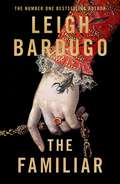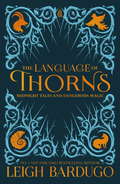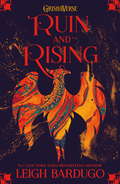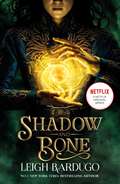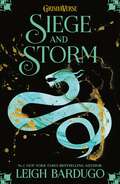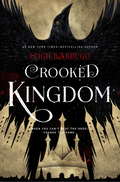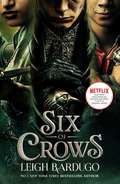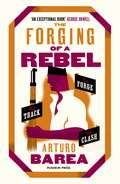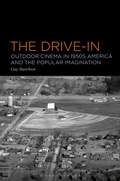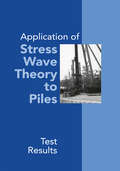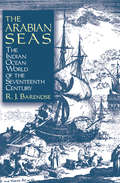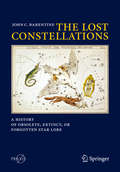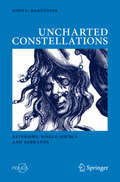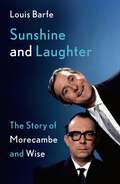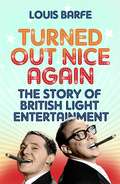- Table View
- List View
Hugo Grotius and the Century of Revolution, 1613-1718: Transnational Reception in English Political Thought
by Marco BarducciHugo Grotius and the Century of Revolution, 1613-1718 is a reconstruction of the way Hugo Grotius (1583-1645) was read and used by English political and religious writers in the seventeenth and early eighteenth centuries. Engaging with the reception of all of Grotius's key works and a wide range of topics, the volume has much to say about the search for peace in an age of religious conflict and about the cultural roots of the Enlightenment. Most of all, Marco Barducci aims to deepen our understanding of the connections that made English political thought part of the history of European thought. To this end, it brings together a succinct account of Grotius's own thinking on key topics, mapping these accounts within English debates, to show why his ideas were seen to be relevant at key moments; shows awareness of the possibilities for the misappropriation inherent in reception; and adds something new to our understanding of why seventeenth-century Englishmen argued in the ways that they did.
Order and conflict: Anthony Ascham and English political thought (1648–50) (Politics, Culture and Society in Early Modern Britain)
by Marco BarducciThis book provides a careful and systematic analysis of Anthony Ascham’s career and writings for the first time in English. During the crucial period between the Second Civil War and the establishment of the English Republic, when he served as official pamphleteer of the Parliament and the republican government, Ascham put forward a complex argument in support of Parliament’s claims for obedience which drew on the political thought of Grotius, Hobbes, Selden, Filmer and Machiavelli. He combined ideas taken from these authors and turned them into a powerful instrument of propaganda to be deployed in the service of the political agenda of his Independent patrons in Parliament. This investigation of Ascham’s works brings together an intellectual analysis of his political thought and an exploration of the interaction between politics, propaganda and political ideas.
The Familiar: A richly imagined, spellbinding new novel from the number one bestselling author of Ninth House
by Leigh Bardugo‘A richly imagined, intricate tale of magic and intrigue’ DEBORAH HARKNESS, #1 bestselling author of A Discovery of Witches‘Riveting… so three dimensional you want to reach through the page’ DIANA GABALDON, #1 bestselling author of Outlander‘A wonderful, transporting ride through history… a deeply romantic novel’ KATHERINE ARDEN, bestselling author of The Bear and The Nightingale-----FATE CAN BE CHANGED.CURSES CAN BE BROKEN.In a shabby house in the new capital of Madrid, Luzia Cotado uses scraps of magic to get through her days of endless toil. But when her scheming mistress discovers her scullion is hiding a talent for little miracles, she demands Luzia use those gifts to win over the royal court.Determined to seize this chance to better her fortunes, Luzia plunges into a world of power-hungry nobility, desperate kings, holy men and seers, where the lines between magic, science and fraud blur. With the pyres of the Inquisition burning, she must use every bit of her wit and resilience to win fame and hide the truth of her ancestry – even if that means enlisting the help of an embittered immortal familiar, whose own secrets could cost her everything.From the Sunday Times bestselling author comes a bewitching novel, brimming with peril in a world where a woman’s ambition can prove deadly.-----PRAISE FOR LEIGH BARDUGO'S BOOKS‘A tour de force of suspenseful pacing and empathetic writing’ THE NEW YORK TIMES‘Simultaneously elegant and grotesque, eerie and earthbound’ WASHINGTON POST'Impossible to put down' STEPHEN KING‘A pacey read with electric prose’ INDEPENDENT‘Sultry, sweeping, picturesque’ USA TODAY
The Language of Thorns: Midnight Tales and Dangerous Magic (The Language of Thorns)
by Leigh BardugoFrom bestselling author of SIX OF CROWS, Leigh Bardugo, comes a darkly atmospheric collection of short stories filled with betrayals, revenge, sacrifice and love - each featuring a stunning illustration by Sara Kiplin.Inspired by myth, fairy tale and folklore, THE LANGUAGE OF THORNS will transport you to both lands familiar and strange that millions have visited through the novels of the Grishaverse.Love speaks in flowers. Truth requires thorns.Travel to a world of dark bargains struck by moonlight, of haunted towns and hungry woods, of talking beasts and gingerbread golems, where a young mermaid's voice can summon deadly storms and where a river might do a lovestruck boy's bidding but only for a terrible price.Inspired by myth, fairy tale, and folklore, no. 1 New York Times-bestselling author Leigh Bardugo has crafted a deliciously atmospheric collection of short stories filled with betrayals, revenge, sacrifice, and love.Perfect for new readers and dedicated fans of the Grishaverse.This collection of six stories includes three brand-new tales, all of them featuring a stunning illustration by Sara Kiplin, as rich in detail as the stories themselves.
Ruin and Rising: Book 3 (The Grisha #Vol. 3)
by Leigh Bardugo*The Grishaverse will be coming to Netflix soon with Shadow and Bone, an original series!*Enter the Grishaverse with book three of the Shadow and Bone Trilogy by number one New York Times-bestselling author Leigh Bardugo. Perfect for fans of Laini Taylor and Sarah J. Maas.Now with a stunning new cover and exclusive bonus material: The Demon in the Wood (a Darkling prequel story) and a Q&A with Leigh Bardugo. Soldier. Summoner. Saint.The nation's fate rests with a broken Sun Summoner, a disgraced tracker, and the shattered remnants of a once-great magical army.The Darkling rules from his shadow throne while a weakened Alina Starkov recovers from their battle under the dubious protection of the zealots who worship her as a Saint. Now her hopes lie with the magic of a long-vanished ancient creature and the chance that an outlaw prince still survives.As her allies and enemies race toward war, only Alina stands between her country and a rising tide of darkness that could destroy the world. To win this fight, she must seize a legend's power - but claiming the firebird may be her ruin. Read all the books in the Grishaverse! The Shadow and Bone Trilogy (previously published as The Grisha Trilogy) Shadow and Bone Siege and Storm Ruin and Rising The Six of Crows Duology Six of Crows Crooked Kingdom The Language of Thorns: Midnight Tales and Dangerous Magic
Shadow and Bone: Book 1 (The Grisha #1)
by Leigh Bardugo*The Grishaverse will be coming to Netflix soon with Shadow and Bone, an original series!*Enter the Grishaverse with book one of the Shadow and Bone Trilogy by number one New York Times-bestselling author, Leigh Bardugo. Perfect for fans of Laini Taylor and Sarah J. Maas.Now with a stunning new cover and exclusive bonus material: The Demon in the Wood (a Darkling prequel story) and a Q&A with Leigh Bardugo.Soldier. Summoner. Saint. Orphaned and expendable, Alina Starkov is a soldier who knows she may not survive her first trek across the Shadow Fold - a swath of unnatural darkness crawling with monsters. But when her regiment is attacked, Alina unleashes dormant magic not even she knew she possessed. Now Alina will enter a lavish world of royalty and intrigue as she trains with the Grisha, her country's magical military elite - and falls under the spell of their notorious leader, the Darkling. He believes Alina can summon a force capable of destroying the Shadow Fold and reuniting their war-ravaged country, but only if she can master her untamed gift.As the threat to the kingdom mounts and Alina unlocks the secrets of her past, she will make a dangerous discovery that could threaten all she loves and the very future of a nation.Welcome to Ravka . . . a world of science and superstition where nothing is what it seems.Read all the books in the Grishaverse!The Shadow and Bone Trilogy (previously published as The Grisha Trilogy)Shadow and BoneSiege and StormRuin and RisingThe Six of Crows DuologySix of CrowsCrooked KingdomThe Language of Thorns: Midnight Tales and Dangerous Magic
Siege and Storm: Book 2 (The Grisha #2)
by Leigh Bardugo*The Grishaverse will be coming to Netflix soon with Shadow and Bone, an original series!*Enter the Grishaverse with book two of the Shadow and Bone Trilogy by number one New York Times-bestselling author Leigh Bardugo. Perfect for fans of Laini Taylor and Sarah J. Maas.Now with a stunning new cover and exclusive bonus material: Nikolai Lantsov character art and a Q&A with Leigh Bardugo.Soldier. Summoner. Saint. Alina Starkov's power has grown, but not without a price. She is the Sun Summoner - hunted across the True Sea, haunted by the lives she took on the Shadow Fold. But she and Mal can't outrun their enemies for long.The Darkling is more determined than ever to claim Alina's magic and use it to take the Ravkan throne. With nowhere else to turn, Alina enlists the help of an infamous privateer and sets out to lead the Grisha army.But as the truth of Alina's destiny unfolds, she slips deeper into the Darkling's deadly game of forbidden magic, and further away from her humanity. To save her country, Alina will have to choose between her power and the love she thought would always be her shelter. No victory can come without sacrifice - and only she can face the oncoming storm.Read all the books in the Grishaverse!The Shadow and Bone Trilogy (previously published as The Grisha Trilogy)Shadow and BoneSiege and StormRuin and RisingThe Six of Crows DuologySix of CrowsCrooked KingdomThe Language of Thorns: Midnight Tales and Dangerous Magic
Six of Crows: Book 2 (Six of Crows #2)
by Leigh Bardugo*The Grishaverse will be coming to Netflix soon with Shadow and Bone, an original series!*The stunning sequel to SIX OF CROWS, this is GAME OF THRONES meets OCEAN'S ELEVEN in a fantasy epic from the number 1 NEW YORK TIMES bestselling author Leigh Bardugo.Welcome to the world of the Grisha.Kaz Brekker and his crew of deadly outcasts have just pulled off a heist so daring even they didn't think they'd survive. But instead of divvying up a fat reward, they're right back to fighting for their lives.Double-crossed and badly weakened, the crew is low on resources, allies, and hope. As powerful forces from around the world descend on Ketterdam to root out the secrets of the dangerous drug known as jurda parem, old rivals and new enemies emerge to challenge Kaz's cunning and test the team's fragile loyalties.A war will be waged on the city's dark and twisting streets - a battle for revenge and redemption that will decide the fate of the Grisha world.As gripping, sweeping and memorable as the Grisha trilogy - SHADOW AND BONE, SIEGE AND STORM and RUIN AND RISING - this novel is perfect for fans of Sarah J. Maas, Laini Taylor, Kristin Cashore and GAME OF THRONES.Winner of the Teen Choice Book Award for Book of the Year.
Six of Crows: Book 1 (Six of Crows #1)
by Leigh Bardugo*The Grishaverse will be coming to Netflix soon with Shadow and Bone, an original series!*Nominated for the CILIP Carnegie Medal 2017, this fantasy epic from the No. 1 NEW YORK TIMES bestselling author of the Grisha trilogy is gripping, sweeping and memorable - perfect for fans of George R. R. Martin, Laini Taylor and Kristin Cashore. Criminal prodigy Kaz Brekker is offered a chance at a deadly heist that could make him rich beyond his wildest dreams - but he can't pull it off alone. A convict with a thirst for revenge. A sharpshooter who can't walk away from a wager.A runaway with a privileged past. A spy known as the Wraith. A Heartrender using her magic to survive the slums. A thief with a gift for unlikely escapes. Six dangerous outcasts. One impossible heist. Kaz's crew is the only thing that might stand between the world and destruction - if they don't kill each other first.An epic new exploration of the Grisha universe from the writer of SHADOW AND BONE, SIEGE AND STORM and RUIN AND RISING, totally consuming for both old fans and new.
The Forging of a Rebel
by Arturo BareaAn astonishing trilogy of books, collected in one volume, documenting the tumultuous first half of the twentieth century in Spain'One of the great autobiographies of the twentieth century' New Republic'Moving and dramatic' New York Review of BooksThe Forging of a Rebel is an unsurpassed account of Spanish history and society from early in the twentieth century through the cataclysmic events of the Spanish Civil War.Arturo Barea's masterpiece charts the author's coming-of-age in a bruised and starkly unequal Spain. These three volumes recount in lively detail Barea's daily experience of his country as it pitched towards disaster: we are taken from his youthful play and rebellion on the streets of Madrid, to his apprenticeship in the business world and to the horrors he witnessed as part of the Spanish army in Morocco during the Rif War. The trilogy culminates in an indelible portrait of the Republican fight against Fascist forces, in which the Madrid of Barea's childhood becomes a shell and bullet-strewn warzone.Combining historical sweep and authority with poignant characterization and novelistic detail, The Forging of a Rebel is a towering literary and historical achievement.Arturo Barea (1897–1957) was born in Badajoz and raised and educated in Madrid. For most of the Spanish Civil War, he acted as head of the Foreign Press and Censorship Bureau of the Republican Government in Madrid and was also the radio broadcaster who spoke as the 'Unknown Voice of Madrid’. Eventually forced out of Spain, he sought temporary asylum in France before crossing to England just before the outbreak of World War II. He and his wife Ilsa settled in Eaton Hastings near Faringdon in Berkshire. From 1940 until 1957 he transmitted a weekly broadcast for Spanish Radio to South America known as Juan de Castilla. He published novels and short stories as well as books of criticism, including Lorca, the Poet (1944) and Unamuno (1952), and his great autobiographical trilogy The Forging of a Rebel first appeared in English between 1941 and 1946.
Vienna: Legend and Reality
by Ilsa Barea'I wanted to reveal the soil, milieu, or social sphere and situation, from which the contributions of Vienna to European civilisation have sprung... I hope it is not my incurable love for my native city which makes me believe that Vienna is still important in the world of today, through all that is alive in its past, present and future...' Ilsa Barea, from her Preface (1966)This fascinating, learned yet highly personal survey explores the legend of Vienna, from frontier fortress and melting pot to the culturally rich centrepiece of the Hapsburg Empire, through two world wars and the grave damage inflicted by Hitler.'A fascinating account, so rich in texture, a book in which history and landscape, personalities and politics and culture combine to produce a living picture.' C.V. Wedgwood'Neither the treacly legend, nor the acid anti-legend, but a delicate and scholarly panorama.' Arthur Koestler
The Drive-In: Outdoor Cinema in 1950s America and the Popular Imagination
by Dr Guy BarefootThe Drive-In meaningfully contributes to the complex picture of outdoor cinema that has been central to American culture and to a history of US cinema based on diverse viewing experiences rather than a select number of films. Drive-in cinemas flourished in 1950s America, in some summer weeks to the extent that there were more cinemagoers outdoors than indoors. Often associated with teenagers interested in the drive-in as a 'passion pit' or a venue for exploitation films, accounts of the 1950s American drive-in tend to emphasise their popularity with families with young children, downplaying the importance of a film programme apparently limited to old, low-budget or independent films and characterising drive-in operators as industry outsiders. They retain a hold on the popular imagination. The Drive-In identifies the mix of generations in the drive-in audience as well as accounts that articulate individual experiences, from the drive-in as a dating venue to a segregated space. Through detailed analysis of the film industry trade press, local newspapers and a range of other primary sources including archival records on cinemas and cinema circuits in Arkansas, California, New York State and Texas, this book examines how drive-ins were integrated into local communities and the film industry and reveals the importance and range of drive-in programmes that were often close to that of their indoor neighbours.
The Drive-In: Outdoor Cinema in 1950s America and the Popular Imagination
by Dr Guy BarefootThe Drive-In meaningfully contributes to the complex picture of outdoor cinema that has been central to American culture and to a history of US cinema based on diverse viewing experiences rather than a select number of films. Drive-in cinemas flourished in 1950s America, in some summer weeks to the extent that there were more cinemagoers outdoors than indoors. Often associated with teenagers interested in the drive-in as a 'passion pit' or a venue for exploitation films, accounts of the 1950s American drive-in tend to emphasise their popularity with families with young children, downplaying the importance of a film programme apparently limited to old, low-budget or independent films and characterising drive-in operators as industry outsiders. They retain a hold on the popular imagination. The Drive-In identifies the mix of generations in the drive-in audience as well as accounts that articulate individual experiences, from the drive-in as a dating venue to a segregated space. Through detailed analysis of the film industry trade press, local newspapers and a range of other primary sources including archival records on cinemas and cinema circuits in Arkansas, California, New York State and Texas, this book examines how drive-ins were integrated into local communities and the film industry and reveals the importance and range of drive-in programmes that were often close to that of their indoor neighbours.
Gaslight Melodrama: From Victorian London to 1940s Hollywood (Film Studies: Bloomsbury Academic Collections)
by Guy BarefootIn 1945, a year when American crime films were apparently moving out on to the streets of contemporary Los Angeles and New York, one reviewer noted the emergence of a 'cycle of mystery and horror pictures placed in the gaslight era of the turn of the century.' For another critic, it seemed that for Hollywood there was 'no world of today save the world of London by gaslight'.In Gaslight Melodrama, Guy Barefoot examines the films that gave rise to such comments, and the pattern of discourse that gave rise to such films. The book's main focus is provided by 1940s Hollywood melodramas such as Gaslight, Dr. Jekyll and Mr. Hyde and Hangover Square. It also discusses a related cycle of British films that located murder and melodrama in Victorian or Edwardian settings, and then looks beyond cinema to the Gothic novels of the 18th century, 19th century discussions of gas lighting in street, home and theatre, and ambivalent 20th century responses to the Victorian era. Combining close analysis of particular film texts with attention to cinema's cultural context, Gaslight Melodrama provides an exploration of the ways in which the past has been the site of contested meaning, and an examination of the network of melodramatic narratives embedded within familiar and lesser-known examples of classical Hollywood cinema.
The Gulag: A Very Short Introduction (VERY SHORT INTRODUCTIONS)
by Alan BarenbergA vast system of prisons, camps, and exile settlements, the Gulag was one of the defining attributes of the Stalinist Soviet Union and one of the most heinous examples of mass incarceration in the twentieth century, combining the functions of a standard prison system with the goal of isolating and punishing alleged enemies of the Soviet regime. it stretched throughout the Soviet Union, from central Moscow to the farthest reaches of Siberia. From its creation in 1930 to its partial dismantling in the mid-1950s, approximately 25 million people passed through the Gulag. Prisoners and exiles were forced to work in brutal conditions, and millions perished. Although the majority of prisoners and exiles were released after Stalin's death, this was not an end to their struggles. Survivors attempted to reintegrate themselves into a Soviet political, social, and economic system that was hardly welcoming. Although some former prisoners wrote or spoke about their experiences in the years and decades after release, it was not until after the collapse of the Soviet Union that a full reckoning became possible. The Gulag: A Very Short Introduction examines the Gulag and its legacy based on prisoner testimony, archival sources, and the very latest scholarship in the humanities and social sciences. It answers pressing questions such as: what was the Gulag, and why was it created? How did it fit into the Soviet social, cultural, and economic system? What did prisoners and exiles, who came from a wide range of backgrounds, experience in the Gulag? What were their prospects for survival? How did former prisoners and exiles attempt to come to terms with their experiences after release? This Very Short Introduction focuses on three themes--the close social, cultural, political, and economic connections between the world of the Gulag and the Soviet Union at large; the diverse identities of prisoners and exiles and how this affected their experiences; and the long-term legacies of the Gulag in the Soviet Union and the post-Soviet successor states. Ultimately, The Gulag: A Very Short Introduction treats the Gulag as one of the quintessential institutions of the Stalinist Soviet Union and an example of how modern states, particularly those with utopian ambitions, have sought to manage populations through incarceration and forced labor.
The Gulag: A Very Short Introduction (VERY SHORT INTRODUCTIONS)
by Alan BarenbergA vast system of prisons, camps, and exile settlements, the Gulag was one of the defining attributes of the Stalinist Soviet Union and one of the most heinous examples of mass incarceration in the twentieth century, combining the functions of a standard prison system with the goal of isolating and punishing alleged enemies of the Soviet regime. it stretched throughout the Soviet Union, from central Moscow to the farthest reaches of Siberia. From its creation in 1930 to its partial dismantling in the mid-1950s, approximately 25 million people passed through the Gulag. Prisoners and exiles were forced to work in brutal conditions, and millions perished. Although the majority of prisoners and exiles were released after Stalin's death, this was not an end to their struggles. Survivors attempted to reintegrate themselves into a Soviet political, social, and economic system that was hardly welcoming. Although some former prisoners wrote or spoke about their experiences in the years and decades after release, it was not until after the collapse of the Soviet Union that a full reckoning became possible. The Gulag: A Very Short Introduction examines the Gulag and its legacy based on prisoner testimony, archival sources, and the very latest scholarship in the humanities and social sciences. It answers pressing questions such as: what was the Gulag, and why was it created? How did it fit into the Soviet social, cultural, and economic system? What did prisoners and exiles, who came from a wide range of backgrounds, experience in the Gulag? What were their prospects for survival? How did former prisoners and exiles attempt to come to terms with their experiences after release? This Very Short Introduction focuses on three themes--the close social, cultural, political, and economic connections between the world of the Gulag and the Soviet Union at large; the diverse identities of prisoners and exiles and how this affected their experiences; and the long-term legacies of the Gulag in the Soviet Union and the post-Soviet successor states. Ultimately, The Gulag: A Very Short Introduction treats the Gulag as one of the quintessential institutions of the Stalinist Soviet Union and an example of how modern states, particularly those with utopian ambitions, have sought to manage populations through incarceration and forced labor.
Gulag Town, Company Town: Forced Labor and Its Legacy in Vorkuta (The Yale-Hoover Series on Authoritarian Regimes)
by Alan BarenbergThis insightful volume offers a radical reassessment of the infamous “Gulag Archipelago” by exploring the history of Vorkuta, an arctic coal-mining outpost originally established in the 1930s as a prison camp complex. Author Alan Barenberg’s eye-opening study reveals Vorkuta as an active urban center with a substantial nonprisoner population where the borders separating camp and city were contested and permeable, enabling prisoners to establish social connections that would eventually aid them in their transitions to civilian life. With this book, Barenberg makes an important historical contribution to our understanding of forced labor in the Soviet Union and its enduring legacy.
Application of Stress Wave Theory to Piles: Proceedings of the 14th International Conference on the Application of Stress-Wave Theory to Piles, The Hague, Netherlands, 21-24 September 1992
by Frans B. J. BarendsThis volume presents the Pile Testing Research Project, and covers most of the results. Topics include: general soil conditions of the test site; pile integrity tests; pile driving prediction contest; pile driving demonstration; and vibratory pile driving techniques.
The Arabian Seas: The Indian Ocean World of the Seventeenth Century
by Rene J. BarendseThe Arabian Seas is a magisterial work on the world political economy (trade, war, power) that explores the intersect of the worlds of Islam (including South and Southeast Asia, the Middle East and East Africa) and the European world-economy (particularly the seafaring Portuguese, Dutch, and British) on the eve of the modern world system. It is likely to become a classic in its field and one of the pillars of the emerging literature in recent years that has begun to recast our understanding of the "early modern history" of Asia and the world economy, underlining the early and long predominance of Asia in the world economy and showing the long and deep ties between European and Asian economic and military interactions. This work centrally addresses current debates on the nature of the early modern world system and the relative strengths of East and West. There are no competitors for this book, but it may be compared with Braudel's masterful studies of the Mediterranean in the sense that it does for the Arabian Seas (Indian Ocean World) spanning South Asia, the Middle East, and the East African Coast and beyond what Braudel did for the Mediterranean.
The Arabian Seas: The Indian Ocean World of the Seventeenth Century (European Expansion And Indigenous Response Ser. #3)
by Rene J. BarendseThe Arabian Seas is a magisterial work on the world political economy (trade, war, power) that explores the intersect of the worlds of Islam (including South and Southeast Asia, the Middle East and East Africa) and the European world-economy (particularly the seafaring Portuguese, Dutch, and British) on the eve of the modern world system. It is likely to become a classic in its field and one of the pillars of the emerging literature in recent years that has begun to recast our understanding of the "early modern history" of Asia and the world economy, underlining the early and long predominance of Asia in the world economy and showing the long and deep ties between European and Asian economic and military interactions. This work centrally addresses current debates on the nature of the early modern world system and the relative strengths of East and West. There are no competitors for this book, but it may be compared with Braudel's masterful studies of the Mediterranean in the sense that it does for the Arabian Seas (Indian Ocean World) spanning South Asia, the Middle East, and the East African Coast and beyond what Braudel did for the Mediterranean.
The Lost Constellations: A History of Obsolete, Extinct, or Forgotten Star Lore (Springer Praxis Books)
by John C. BarentineCasual stargazers are familiar with many classical figures and asterisms composed of bright stars (e.g., Orion and the Plough), but this book reveals not just the constellations of today but those of yesteryear. The history of the human identification of constellations among the stars is explored through the stories of some influential celestial cartographers whose works determined whether new inventions survived. The history of how the modern set of 88 constellations was defined by the professional astronomy community is recounted, explaining how the constellations described in the book became permanently “extinct.” Dr. Barentine addresses why some figures were tried and discarded, and also directs observers to how those figures can still be picked out on a clear night if one knows where to look. These lost constellations are described in great detail using historical references, enabling observers to rediscover them on their own surveys of the sky. Treatment of the obsolete constellations as extant features of the night sky adds a new dimension to stargazing that merges history with the accessibility and immediacy of the night sky.
Mystery of the Ashen Light of Venus: Investigating a 400-Year-Old Phenomenon (Astronomers' Universe)
by John C. BarentineThe “Ashen Light” of Venus—a ghostly emission of light from the night side of our nearest planetary neighbor—is among the last unsolved mysteries of astronomical history. In the four centuries since the phenomenon was first reported, highly reputable visual observers of Venus have recorded seeing the Ashen Light, while others have spent a lifetime searching for it without once being convinced that they ever saw it. Is the Ashen Light a trick of the eye? The result of a defective lens? A real scientific event? Occasional references to the Ashen Light are scattered across the literature, yet no work to date has synthesized these records. This book therefore digs deep into the history of the mystery and our latest attempts to understand it, sifting through the clues that might explain whether it is caused by physics, is conjured up by the eye or brain, or a combination of both. This baffling story will appeal to amateur astronomers, hobbyists, and lay readers interested in joining the debate about one of the most elusive observable phenomena ever recorded in the night sky.
Uncharted Constellations: Asterisms, Single-Source and Rebrands (Springer Praxis Books)
by John C. BarentineThis book compiles an array of interesting constellations that fell by the wayside before the IAU established the modern canon of constellations. That decision left out lesser known ones whose history is nevertheless interesting, but at last author John Barentine is giving them their due. This book is a companion to "The Lost Constellations", highlighting the more obscure configurations. The 16 constellations found in this volume fall into one or more of three broad categories: asterims, such as the Big Dipper in Ursa Major; single-sourced constellations introduced on surviving charts by a cartographer perhaps currying the favor of sponsors; and re-brands, new figures meant to displace existing constellations, often for an ideological reason. All of them reveal something unique about the development of humanity's map of the sky.
Sunshine and Laughter: The Story of Morecambe & Wise
by Louis BarfeThe unique story of Eric Morecambe and Ernie Wise – British television's most iconic double act. 'A warm and sympathetic portrait of two pals who conquered the world simply by radiating hilarious friendship' Sunday Times 'Barfe lifts the lid on the lives of TV's most iconic double act... and gets to the heart of what made them so loved by a nation' Sunday Post 'Set to be the definitive account of the television age's funniest pair' New European 'Colour about the characters of [Morecambe and Wise] is mixed with Barfe's usual forensic research' ChortleThe Morecambe and Wise Show was the crème de la crème of TV light entertainment from the late 1960s until the early 1980s. The hardy perennial comedy duo at its heart had even greater longevity, spanning five decades and becoming a national institution whose shows drew audiences in excess of twenty million. They also loved each other like brothers, and the audience repaid that love; they were the nation's best friends.In Sunshine and Laughter, Louis Barfe tells the touching story of Morecambe and Wise, and explores how it is that thirty-seven years after their last television show, the tall handsome one with glasses and the one with the short, fat, hairy legs continue to work their unique brand of comedy magic.
Turned Out Nice Again: The Story of British Light Entertainment
by Louis BarfeWith a cast of thousands, including Peter Cook, Ken Dodd, Dusty Springfield, Spike Milligan, Rolf Harris, Bruce Forsyth and Reeves and Mortimer, Turned Out Nice Again reveals a world of comedians and cavorters, dancing girls and crooners. From the early days of vaudeville, via the golden age of radio, to live television spectaculars, the rise of the chat show and alternative comedy, Louis Barfe pulls back the curtain of variety to reveal the world of light entertainment in all its glory.


